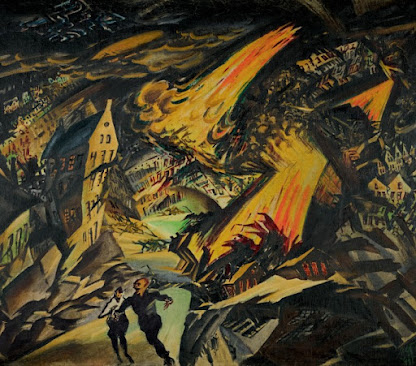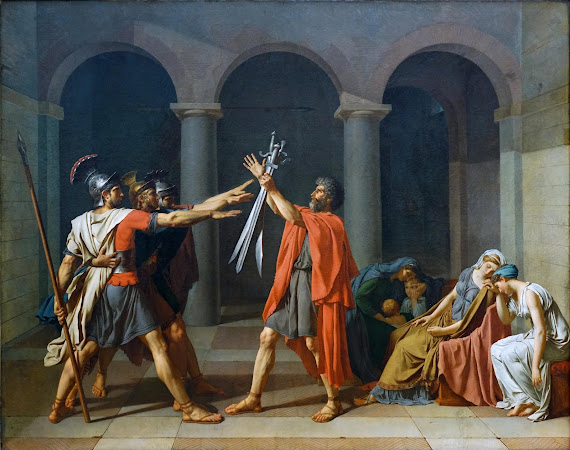Early Modern Art and WW1
WW1 and its Influence on Early Modern Art
There were many influences on Early Modern art, but the most interesting is the influence of World War One. Before the war, many artists were trying to break away from the strict rules under art. You can see this change when you look at art from the end of the Romantic era because there is a shift in the aesthetic representation. Of course, most of this shift had to do with the fact that young men were laying down their lives at war, and artists were too horrified to paint impressions of light and entertainment. Obviously, the war shook the art world to its core, but the destruction of traditional values inspired artists to rebuild. This is when new styles such as Dada, Surrealism, De Stijl, and abstract sculptures emerged. There are a few characteristics of Early Modern art that can help you identify it such as innovation and experimentation with shapes, colors, and lines. In addition, there was some rejection of history and conservative values.
 |
| "Soldiers" by Emil Nolde Germany, 1913 |
 |
| "The Fallen Man" by Wilhelm Lehmbruck Germany, 1916 |
 |
| "Apocalyptic Landscape" by Ludwig Meidner Germany, 1913 |
Elements of Art
Before the war, many artists were trying to break away from the strict rules under art. You can see this change when you look at art from the end of the Romantic era because there is a shift in the aesthetic representation. Early Modern Art was a rejection of history and conservative values because many artists were tired of the conformity and old traditions of art; they wanted to break free. When World War One began, many artists were in shock and became very traumatized, however, they took this opportunity to create a new style of art. Early Modern Art has a mix of straight and broken lines which appear to be intense and jagged. Even though the lines are a bit sharp, the texture of the paint strokes seems soft. In addition, the colors during this era are much darker and more depressing. Of course, war is depressing and you can most definitely feel those emotions of fear and uncertainty when you look at these pieces.
Works Cited.
“Apocalyptic Landscape .” Art Institute Chicago, www.artic.edu/artworks/198864/apocalyptic-landscape.
Farrell, Jennifer. “Art as Influence and Response: A First Look at World War I and the Visual Arts.” The MET, The Metropolitan Museum of Art, 16 Oct. 2017, www.metmuseum.org/blogs/now-at-the-met/2017/world-war-i-and-the-visual-arts-introduction.
“Modern Art and World War I.” DW, Deutsche Welle, 4 Oct. 2014, www.dw.com/en/modern-art-and-world-war-i/g-17558156.


Interesting, a blog on the same topic as the one I chose to go over for this section of the class. I think its really fascinating how the Dada movement really just exploded with influence through World War I. Dada art would have to be my personal favorite style of Early Modern art. "Soldiers" by Emil Nolde is a awesome piece of art that you included, I'm a fan of the color and contrast elements used to composed the painting. Great blog post!
ReplyDelete